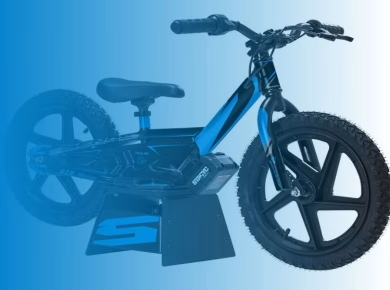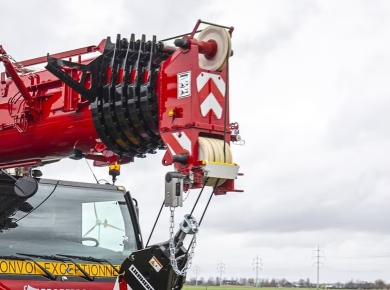Every day on a construction site, routine tasks can turn into a recipe for disaster if the fundamentals of manual handling aren’t diligently observed. The physical demands of the job often lead workers to adopt poor lifting techniques, which can result in debilitating back injuries—an issue that many professionals in our industry tend to underestimate until it’s too late. Even a seemingly harmless lift can spiral into chronic pain or a long-term disability, altering not just a worker’s career but their entire quality of life. Drawing from years of experience in health and safety, it’s essential to shine a light on manual handling practices that can prevent injuries before they happen.
Understanding Manual Handling Risks
In the fast-paced environment of construction, the emphasis is often placed on speed and efficiency. However, overlooking safe manual handling practices can result in significant risks. Back injuries are not only one of the most common but also one of the costliest for both workers and employers. According to the Health and Safety Executive, manual handling injuries account for a substantial percentage of workplace injuries. These statistics serve as a stark reminder that we need to prioritize training and awareness around proper lifting techniques.
The Anatomy of a Back Injury
A back injury can occur from a myriad of activities—lifting, pushing, pulling, or carrying heavy objects without adequate support. The spine is a complex structure, and when subjected to excess strain, it can lead to herniated discs, muscle strains, or even nerve damage. Understanding the mechanics of how these injuries occur is crucial. For instance, improper posture during lifting can increase pressure on the spine and lead to injury over time. This is why it’s vital to educate workers on the importance of body mechanics and ergonomics.
Implementing Safe Lifting Techniques
Training should encompass effective lifting techniques that mitigate the risk of back injuries. One of the most effective methods is the “Lift with your legs, not your back” principle. This simple advice can be a game-changer. Workers should be taught to bend their knees, keep their feet shoulder-width apart, and maintain a straight back while lifting. Using this technique not only distributes weight evenly but also utilizes the strong muscles in the legs rather than straining the back.
The Role of Team Lifting
In scenarios involving heavy or awkwardly shaped objects, team lifting should be encouraged. Not only does this reduce the risk of injury, but it also fosters teamwork and communication on the job. Before attempting to lift a heavy load, workers should discuss and coordinate their movements to ensure they are in sync. This not only minimizes the risk of accidents but also promotes a culture of safety that can be contagious across the site.
Utilizing Equipment and Aids
The right tools can make a world of difference in manual handling. Equipment like hoists, dollies, or forklifts are essential for transporting heavy materials without putting undue strain on workers. Often, these tools are underutilized due to a lack of training or awareness. Ensuring that all team members are well-versed in the use of these aids can drastically reduce the incidence of back injuries.
Regular Equipment Maintenance
Additionally, it’s crucial to maintain this equipment properly. Regular inspections and maintenance checks can prevent malfunctions that could lead to accidents. A well-maintained tool not only performs better but also keeps workers safe. Encourage a culture of accountability where team members feel responsible for reporting any issues with equipment—this is a small step that can have a massive impact.
The Importance of Training and Refreshers
While initial training is critical, ongoing education is equally important. Regular refresher courses can keep manual handling techniques fresh in the minds of employees and help them stay updated on best practices. These sessions can also serve as an opportunity to address any new challenges that may have arisen since their last training.
Creating an Engaging Training Environment
Consider incorporating real-life scenarios into training sessions. Using case studies or role-playing can make these sessions more engaging and memorable. Workers are more likely to remember a lesson when they can see its practical application. This approach not only enhances learning but also encourages open discussions about challenges and solutions in manual handling.
Promoting a Culture of Safety
Finally, fostering a culture of safety is perhaps the most significant step in preventing manual handling injuries. Safety should be embedded in every aspect of the workplace, from daily meetings to project planning. Encourage workers to speak up about unsafe practices or conditions without fear of repercussion. A robust safety culture not only protects individuals but also contributes to the overall efficiency and morale of the team.
Recognizing and Rewarding Safe Practices
Recognizing and rewarding safe practices can also reinforce this culture. Simple acknowledgments can go a long way in motivating workers to prioritize safety. Whether it’s through safety awards or a simple thank you, showing appreciation for safe handling practices encourages continued diligence.
In a field where physical demands are high and the risks are often overlooked, prioritizing manual handling safety is not just an obligation—it’s a commitment to the well-being of every worker on site. By understanding the risks, implementing effective techniques, utilizing equipment, providing ongoing training, and fostering a culture of safety, we can significantly reduce the incidence of back injuries. Let’s remember that a safe workplace is a productive workplace, and investing in safety today will pay dividends tomorrow.



